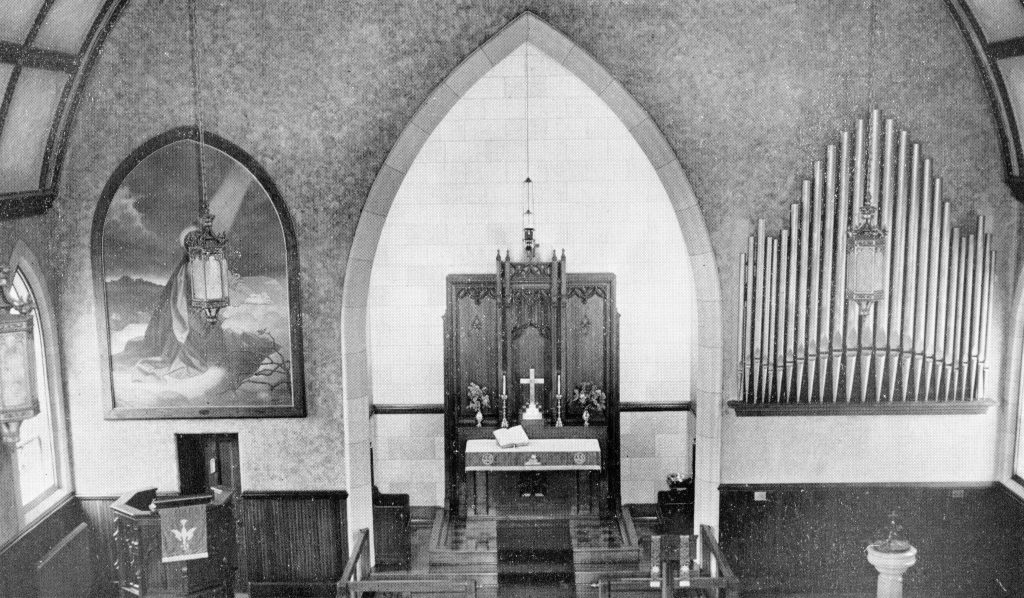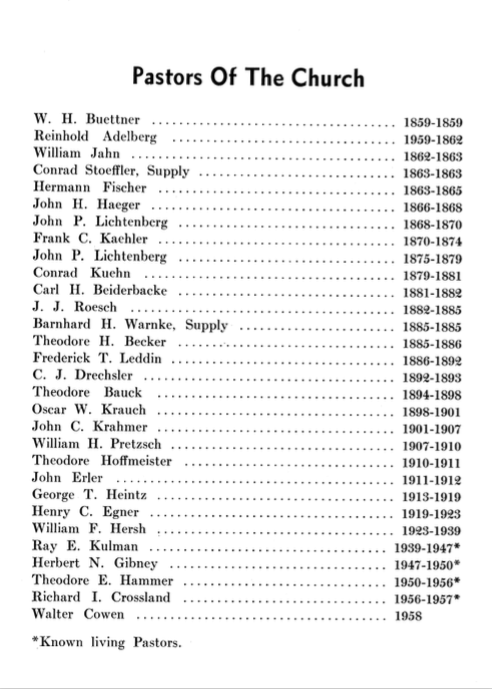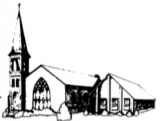Atonement – The First 100 Years
The congregation was organized in the Davis building, where Delson’s store was located (on the southeast corner of Main and Partition); They worshiped for a time in the old Academy, (now the VFW hall) and occasionally in the Congregational church. The property on the southwest corner of Ulster Ave and Elizabeth St. was purchased from the German Methodist congregation and the newly acquired church was consecrated on Reformation Day, 1859. By 1867 the pastor was able to report 110 communicant members.
The Rev. William Hull’s pamphlet, “History of the Lutheran Church in Ulster County, New York”
“On the 8th of June 1859, a German Lutheran Church was organized in the village of Saugerties, a place of about 4,000 inhabitants, and this organization united with he New York Ministerium at its annual session in Wurtemburg (Dutchess County), September 5, 1859. The congregation bought a church property in the village which was owned by the German Methodists”.
The old parsonage on Ulster Ave opposite Elm St was sold in February 1888 and a property on Livingston St opposite First St was purchased. The need for a more spacious house of worship in a more desirable location was felt, but the long cherished hope was not realized until 1895, when a property (at the current location) on Market Street was bought.

The present brick church was erected at a cost of $6,000. The new house of worship was consecrated to the service of the Triune God on February 9, 1896. In 1898 the evening services began to be conducted in English. In the spring of 1906 a two-manual pipe organ was installed at a cost of $1,500. In June, 1908, the Junior Luther League was organized. The following year, the 50th anniversary of the church was celebrated with appropriate services, during the pastorate of Pastor Pretzsch.
In September, 1911, in St. Matthew’s Church Brooklyn, the congregation became affiliated with the New York Synod of General Synod. The name “Evangelical Lutheran Church of the Atonement” was adopted at the annual congregational meeting of January, 1914, and it was voted to use English at all services.
The Brotherhood was organized that December. Early in 1921 the Brotherhood voted to rebuild and enlarge the church basement for use for Sunday School and social gatherings. The labor was done by the men of the church and the basement was publicly opened in September. That same month the choir made its first appearance in choir robes made by the women of the church. In 1921, it was decided to sell the Livingston Street parsonage and to buy the present brick dwelling next to the church.

The church was completely renovated in 1927, at a total cost of $10,000. Gifts made to the church at that time included a new alter, altar rail, choir rail, hardwood flooring, lighting fixtures and wiring, pulpit chairs, lectern, pulpit light, electric outdoor bulletin board and entrance lights. Rededication services were held that October. Two years later the organ chimes were presented and in 1932 new pews were added.
The 75th anniversary was celebrated in 1934, during the 16-year pastorate of Pastor Hersh, who served until his death in September, 1939. As an anniversary gift, the Sunday school gave the oil pointing “Christ in Gethsemane”, which graces the front of the sanctuary. The anniversary banquet was held at the Maxwell House.

The congregation voted to have an oil burner installed in the church in 1936, and in 1938 the finial on the steeple was replaced with a cross. A property on the east side of Market Street was purchased as a parish house site in 1946 and sold ten years later.
In 1954, the property to the north of the church was bought, and has since been used as a parish house. (Now the PLC). A new Mueller organ was installed in August 1957 and the new Service Book and Hymnal was used for the first time late in 1958.
Atonement Lutheran Church entered its second century of service on June 9, 1959.
Editors Note: Pictures and text in this article were taken from the 100th Anniversary booklet produced by Atonement Lutheran Church. This article includes minor revisions to reflect current day locations. Most names have been omitted except for Pastors and Authors.

